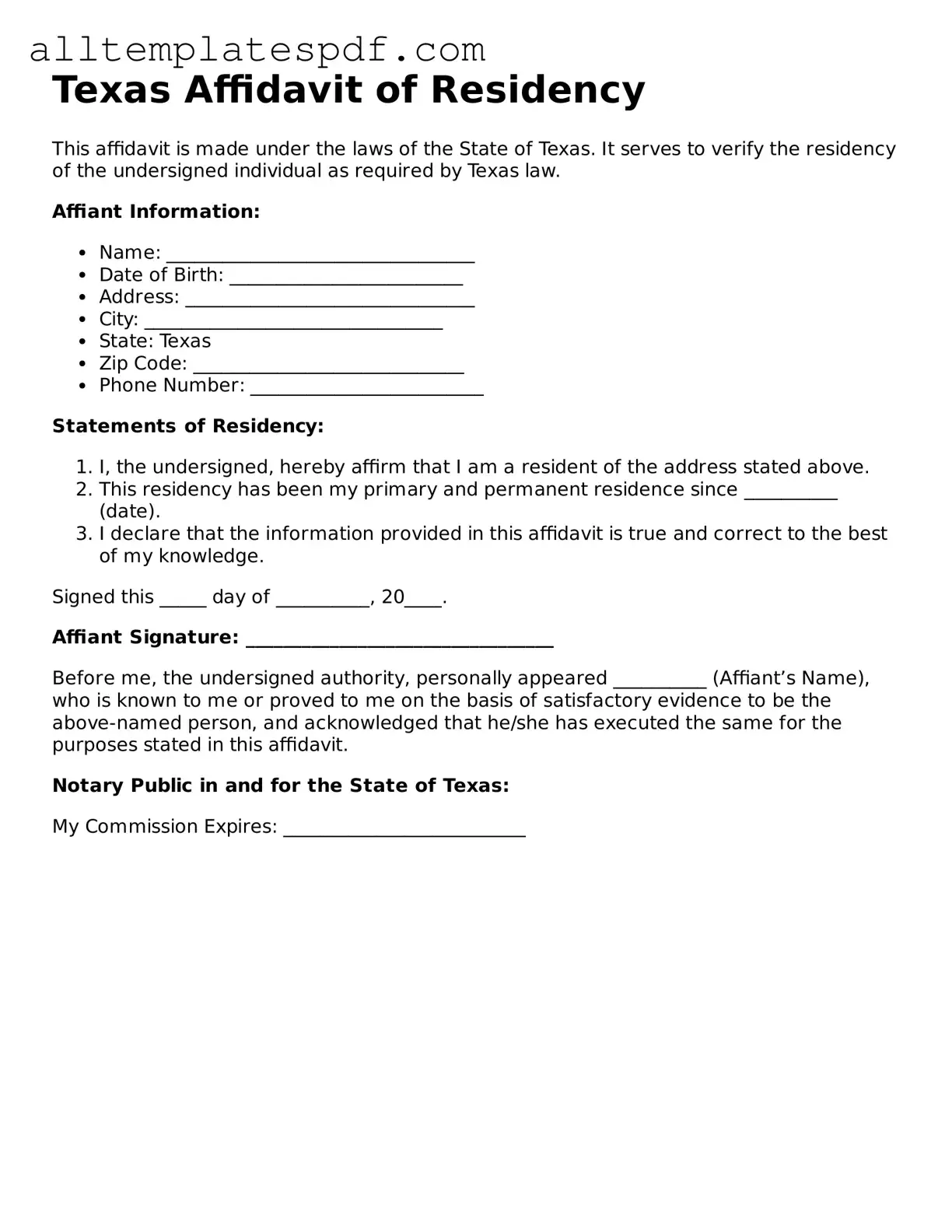Filling out the Texas Affidavit of Residency form can seem straightforward, but many individuals make common mistakes that can lead to delays or complications. One frequent error is not providing accurate information. Whether it’s the wrong address or incorrect personal details, ensuring that everything is precise is crucial. A simple typo can cause significant issues down the line.
Another mistake people often make is failing to sign the form. It may seem like a minor detail, but without a signature, the affidavit is incomplete. Double-checking that all required signatures are present can save time and prevent unnecessary back-and-forth communication.
Many individuals overlook the requirement for a witness. The Texas Affidavit of Residency form typically needs to be signed in the presence of a witness. Not having this crucial step completed can render the affidavit invalid. It’s essential to ensure that a qualified witness is present during the signing process.
In addition, some people forget to include the date on which the affidavit was signed. This detail is important for establishing the timeline of residency. An omitted date can lead to confusion or disputes about the validity of the affidavit.
Another common oversight is not providing supporting documentation. The affidavit may require additional proof of residency, such as utility bills or lease agreements. Failing to include these documents can delay processing and may result in the affidavit being rejected.
Lastly, individuals sometimes neglect to read the instructions carefully. Each section of the form has specific requirements, and overlooking these can lead to incomplete or incorrect submissions. Taking the time to thoroughly review the instructions can make a significant difference in ensuring that the form is filled out correctly.
